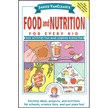Proteins are chains of amino acid molecules connected by high energy bonds, called peptide bonds.
There are twenty two different kinds of amino acids that are combined in different orders to form proteins. All but nine of the amino acids can be produced by your body. These nine amino acids are called essential amino acids because they are essential to your good healt and must be part of your diet.
Milk have many proteins, including the nine essential amino acids.
The two basic types of proteins in milk are called casein and whey.
Based on their chemical composition and physical properties, the two groups of milk proteins are Casein and whey.
Casein proteins contains phosphorus and will coagulate at pH 4.6.
Casein proteins group together form sphere-like structures called micelles.
Casein micelles are not solid throughout. Instead, the way the protein molecules group together leaves spaces, much like tunnels through the micelles. These spaces allow the liquid part of milk to flow in and out of the micelles.
Casein micelles are too large to dissolve and form a solution, like salt in water does.
Casein micelles are too small to sink, like sand in water does. Instead, the micelles float around in the milk. This type of mixture is called a colloid.
Whey proteins, also called serum proteins, do not contain phosphorus and do not coagulate at pH 4.6.
Whey proteins are individual protein molecules spread throughout the liquid part of the milk.
If casein micelles come apart, the proteins forming it are not soluble in the liquid. Thus they “come out of solution.” This means that these proteins separate from the liquid. These proteins now coagulate, which means they clump together into a mass called curd.
Casein proteins, unlike most proteins, is not denatured by heat. For example, when an egg is heated, the protein making up the liquid surrounding the yellow yolk changes to a white solid. The protein has been denatured–changed in some chemical way. So, heating milk does not cause the casein proteins to be denatured–to coagulate.
Casein proteins are denatured by a change in pH. The casein proteins will coagulate at pH 4.6.
 |
Food and Nutrition for Every Kid |
